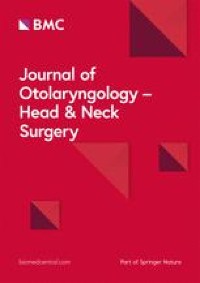Eur Arch Otorhinolaryngol. 2021 Nov 5. doi: 10.1007/s00405-021-07151-3. Online ahead of print.
ABSTRACT
BACKGROUND: The management of thyroid nodules ≥ 4 cm is controversial due to conflicting evidence on the prevalence of malignancy and diagnostic accuracy of fine-needle aspiration cytology (FNAC). Some literature recommends routine excision of large thyroid nodules due to high cytology false negative rates (FNR). We aim to investigate the diagnostic accuracy of FNAC, prevalence of malignancy in large (≥ 4 cm) thyroid nodules compared to nodules < 4 cm, and the clinical and ultrasound characteristics of those large nodules with false negative cytology.
METHODS: This was a retrospective case-log review in a tertiary referral hospital. All thyroid nodules subjected to Ultrasound (US)-guided FNAC by the Interventional Radiology department between December 2011 and November 2017 were included. Data on patient demographics, th yroid US features, cytology findings, and surgical histology were collected and analyzed. Sensitivity, specificity, and FNR were calculated based on FNAC results and final post-operative histology. Factors associated with a false negative result were analyzed using univariate and multivariate analyses.
RESULTS: A total of 4982 nodules were studied, including 4419 < 4 cm and 563 ≥ 4 cm. Malignancy rates were similar in both groups. For nodules ≥ 4 cm, FNAC sensitivity was 40%, specificity 100%, and FNR 6.6% compared to 4.2% in nodules < 4 cm. Within malignant nodules, there was a significantly higher proportion of follicular and Hurthle cell carcinomas in nodules ≥ 4 cm. Amongst nodules ≥ 4 cm, multivariate analysis revealed male gender to be an independent predictor of FNR (OR 3.32; 95% CI 1.29-8.59).
CONCLUSION: Larger nodules ≥ 4 cm have a similar malignancy rate as nodules < 4 cm, and FNAC FNR is low at 6.6%. Management of large thyroid nodules shou ld be individualized based on their clinical, sonographic and cytological features rather than routine surgery.
LEVEL OF EVIDENCE: 3.
PMID:34739578 | DOI:10.1007/s00405-021-07151-3



